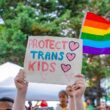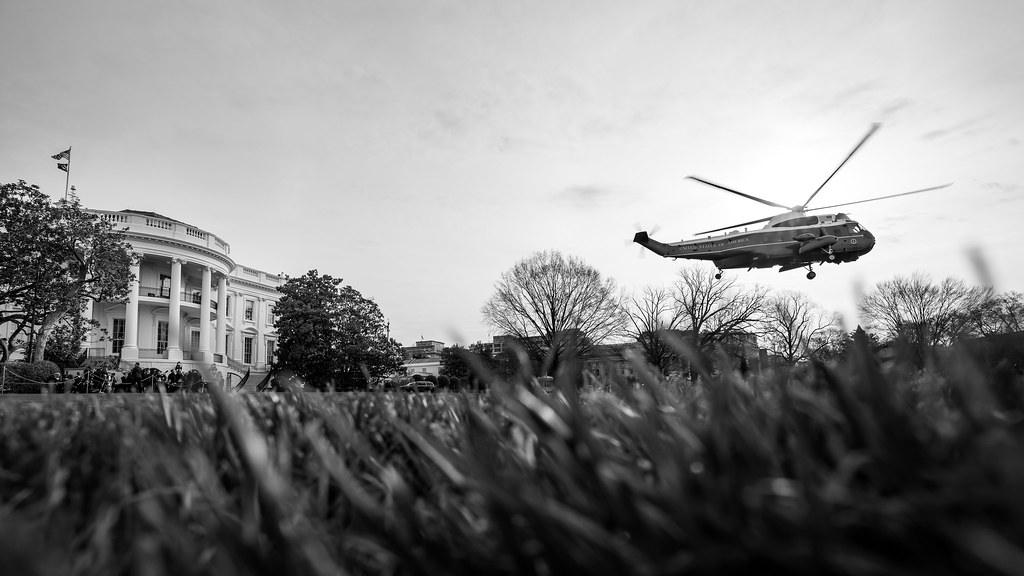EDITOR'S NOTE
This analysis was produced in collaboration with the Harvard Asian American Policy Review and appears in the journal's 32nd print volume. Support The Yappie's work by making a donation.
Update: Roughly one month after this project was published in the Review's print journal in May 2022, the chief statistician of the United States announced the launch of a formal review to revise the Office of Management and Budget's Directive 15, the memo that guides the federal government's standards for the collection and reporting of race and ethnicity data.
AS THE CORONAVIRUS began its rapid spread throughout the United States in early 2020, researchers studying its impact detected an alarming trend. In roughly a dozen states that report data on Native Hawaiians and Pacific Islanders (NHPIs), the virus seemed to be tearing through NHPI communities with particular viciousness—resulting in higher infection and death rates than any other racial or ethnic group.[i]
But COVID-19’s disproportionate impact on NHPIs was nowhere to be found in data published by the Centers for Disease Control and Prevention (CDC)—at least initially. In most reports, Pacific Islanders had been grouped together with Asian Americans, masking the virus’ true devastation in their communities. The CDC’s hospitalization and death tracker also appeared to exclude NHPIs, despite providing comparisons between Black, Latino, Indigenous, and Asian populations to Whites.
The agency’s failure to provide specific data on NHPIs was no accident.[ii] The CDC’s pandemic surveillance system relies on and reflects the inconsistent practices of local and state health departments, where granular NHPI data collection is “virtually nonexistent,” according to a September 2021 study.[iii]
As a result, academics and journalists have turned to alternate sources as they seek to understand the pandemic’s unequal effects. Community groups and a handful of state agencies have played key roles in identifying these troubling NHPI trends by engaging in a process of “disaggregation,” whereby information on diverse subgroups is collected and reported separately.
At first glance, data disaggregation seems like a logical step to counter toxic stereotypes about Asian Americans and Pacific Islanders (AAPIs) and help inform policy makers about the nuanced needs of more than 50 different subgroups. The reality is far more complex and occasionally puzzling. Despite enjoying support from many prominent activists and decision makers today, decades-long campaigns aimed at swaying governments to disaggregate AAPI data have struggled to gain traction. Those who spoke to The Yappie—including seasoned advocates, researchers, and former administration officials—point to a variety of reasons for the lack of progress, ranging from red tape to community infighting.
Yet even those justifications do not tell the whole story. Instead, history shows the greatest challenge to data disaggregation is that it is interwoven with raw, longstanding debates over who gets to be part of the “AAPI” umbrella, and the ever-shifting power dynamics that come with the term.
Making “Asian America”
Today, the labels “Asian American” and “AAPI” are everywhere. But their dominant use is both recent and inherently political, a product of an ongoing process of self-identification, advocacy, and federal bureaucracy.
Prior to the 1960s and 70s, people of Asian descent in the U.S. loosely self-identified with subgroups, choosing terms such as Filipino, Japanese, Chinese American, and so on to describe themselves. These labels were often tied to pride as different ethnic enclaves expanded, but their geopolitical roots also led to darker scenes—such as when fearful Chinese and Korean Americans scrambled to distinguish themselves from Japanese Americans during World War II, aiming to prove their loyalty to the US.[iv]
Meanwhile, White policymakers looking to wield their powers against a broad swath of immigrants from Asia embraced the colonialist label, “Oriental.” Though the derogatory term fell out of favor in the late 20th century, it would take a 2015 bill authored by Congresswoman Grace Meng (D-New York) to formally strip it from federal law.[v]
Among those looking to reject “Oriental” were activists at the University of California, Berkeley, who sought to unify Filipino, Korean, Japanese, and Chinese students on campus into a bloc lobbying for ethnic studies. In May 1968, the Asian American Political Alliance emerged from their efforts and was led by graduate students Emma Gee and Yuji Ichioka, who drew inspiration from the Black Power Movement and anti-Vietnam War protests.[vi]
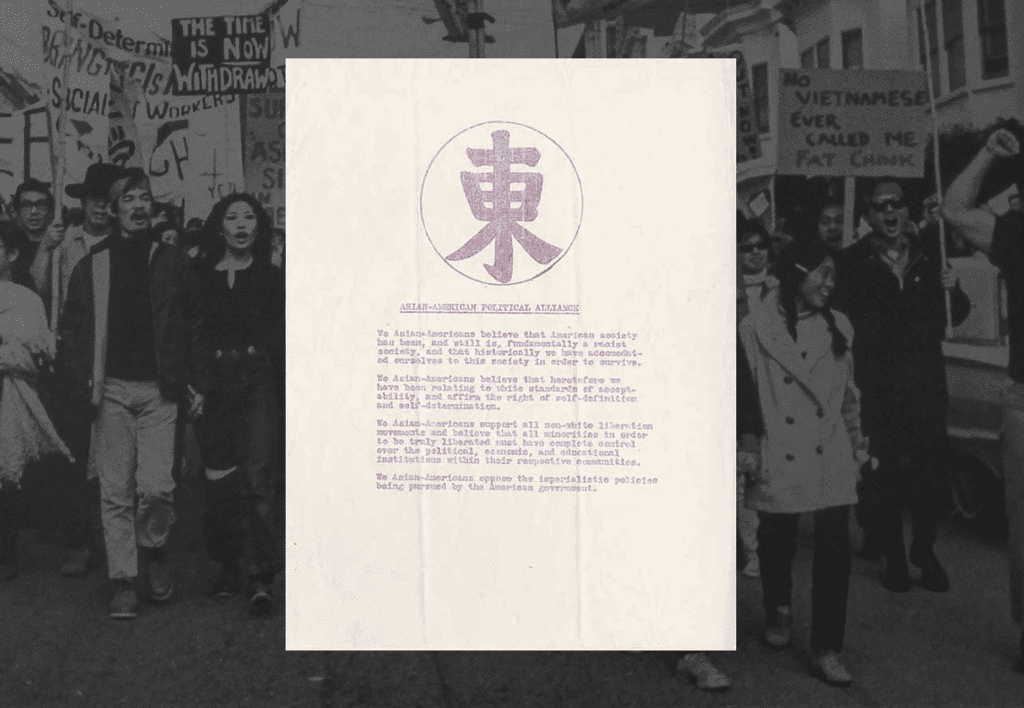

The term “Asian American”—radical at the time—would go on to promote pan-Asian alliances, build political power, and influence decades of civil rights activism.[vii] The 1982 killing of Vincent Chin, a Chinese American man who was brutally beaten by two White auto workers in Detroit, was rooted in a wave of anti-Japanese sentiment in the U.S. fueled by Japan’s automotive boom. The attack and its aftermath was a pivotal moment that helped popularize the term beyond activist and academic circles, while triggering the formation of advocacy groups under the “Asian American” umbrella.[viii] Later, tragedy in the form of post-September 11 hate crimes would also spur the creation of organizations to support South Asian, Muslim, and Sikh communities.
Soon, the federal government took notice. Less than a decade after the term “Asian American” was coined, an obscure office in Washington would prove consequential in transforming the political label—and igniting the push for disaggregation.
THE FEDS TAKE THE WHEEL
Look through reports and federally funded studies from the mid-to-late 1900s, and you’ll find mentions of “Oriental Americans” (usually referring to Chinese, Japanese, Filipino, and occasionally Korean Americans) littered through their pages.[ix]
Decisions made by the Federal Interagency Committee on Education (FICE), an entity housed under the now-abolished U.S. Department of Health, Education, and Welfare (HEW) during the Johnson and Nixon administrations, would soon change that. Facing questions from Congress over how the government planned to enforce legislatively mandated protections born from the Civil Rights Movement, the panel lamented the lack of “useful” race data in an April 1973 report to HEW’s Secretary Caspar Weinberger.
Weinberger, a Republican lawyer who earned the nickname “Cap the Knife” for attempting to slash social spending as Nixon’s director of the Office of Management and Budget (OMB), showed “particular interest” in the issue, federal papers say, and encouraged the coordinated development of “common definitions” for racial and ethnic groups.[x] The walkout of Native American and Hispanic representatives at a HEW meeting and added pressure from the U.S. Commission on Civil Rights—which wrote that “virtually every aspect of the Federal civil rights effort has suffered from lack of sufficient data”—spurred Weinberger and FICE to create the Ad Hoc Committee on Racial and Ethnic Definitions in June 1974.[xi]
Though little record of the committee’s activities is publicly available, its 25 members set out to determine major groups to be identified by federal agencies. Their choices would have a seismic impact on how Asian Americans and Pacific Islanders are described today.
Documents show the panel tapped Juanita Tamayo Lott, a Filipina American government statistician and director of HEW’s Office of Asian American Affairs, to assist in the committee’s final recommendations. In her 1998 book, Asian Americans: From Racial Category to Multiple Identities, Lott—who was on the front lines in a 1968 San Francisco State student strike that resulted in the country’s first ethnic studies department—noted that the committee wrestled with “major” problems over how to define Asian populations.[xii]
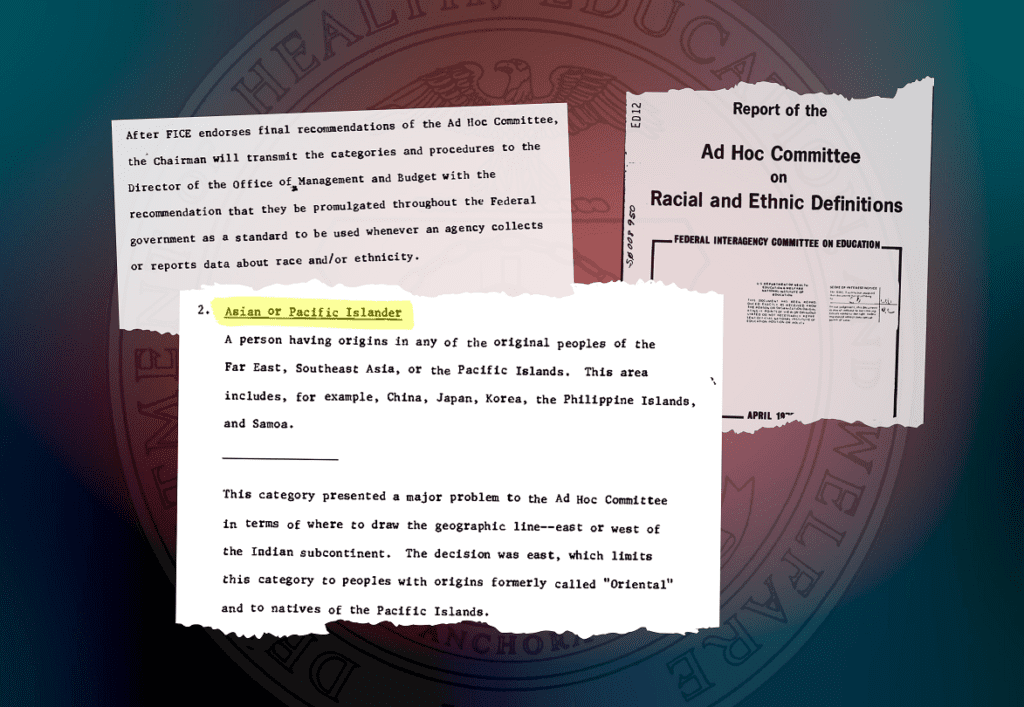

In its final April 1975 report, the committee settled on “Asian or Pacific Islander” as a replacement for “Oriental.”[xiii] The move artificially unified disparate populations from countries east of the “Indian subcontinent” while lumping in natives of the Pacific Islands to create a single demographic. At the same time, the panel also endorsed classifying “Asian Indians” as “Caucasian” after the Supreme Court had also declared them “Caucasian” but not “white” in the 1923 case United States v. Bhagat Singh Thind.[xiv]
The committee’s creation of “Asian or Pacific Islander” and four other constructed racial classifications, including the contentious pan-ethnic term “Hispanic,” “resounded throughout the federal government,” per the Washington Post.[xv] Two years after the recommendations were published, they served as the blueprint for a groundbreaking OMB memo called Directive No. 15, which formally ordered historically-fragmented federal agencies to collect and disseminate data using the new standards.[xvi]
But the racial categories themselves remained “fluid and negotiated,” according to Thomas P. Kim, author of The Racial Logic of Politics: Asian Americans and Two-Party Competition. As the federal government began to determine “protected classes” for civil rights enforcement, different groups “jockeyed to be included in or excluded.”[xvii] For example, prior to the publication of OMB’s 1977 directive, the Association of Indians in America successfully lobbied the agency to reclassify persons with “origins on the Indian subcontinent” from White to the Asian category to ensure minority status.[xviii] That sizable shift would serve as a preview for the firestorm to come.[xix]
Less than a decade after the term “Asian American” was coined, an obscure office in Washington would prove consequential in transforming the political label—and igniting the push for disaggregation.
A STATISTICAL STORM
In the eyes of activists, OMB’s directive was a blessing and a curse. For the first time, federal agencies had guidelines to combat discrimination and present standardized labor, health, and education statistics. Furthermore, better collection of racial and ethnic data in the decennial census, used to shape political representation and distribute billions of dollars in federal funding, had far-reaching consequences that benefited typically undercounted communities.
But as Directive 15’s implications became evident, dissatisfaction over the accuracy of the data bloomed into an explosive controversy. The problem? Aggregation.
Although OMB’s guidance did not restrict data collection to the five racial categories, numerous agencies relied on aggregated figures to draw sweeping conclusions about AAPIs and actively reinforced harmful stereotypes, even when they had more precise information available.
In one striking instance, the Asian & Pacific Islander American Health Forum pointed to the 1985 “Heckler Report” by the U.S. Department of Health and Human Services (HHS).[xx] While it marked one of the first comprehensive government reviews of minority health disparities, HHS incorrectly asserted that “[t]he Asian/Pacific Island minority, in aggregate, is healthier than all racial/ethnic groups in the United States, including Whites.”[xxi]
The influence of OMB’s guidance was also felt well beyond federal programs. Originally crafted to meet reporting needs mandated by Congress, it “inordinately shaped the very discourse of race in the United States,” according to scholars Yen Le Espiritu and Michael Omi.[xxii] State and local governments, marketing firms, nonprofits, and even researchers adopted the classifications, putting them to widespread use despite the fact that they were primarily developed based on geographic, federal compliance, and political considerations—not actual scientific, cultural, ethnic, or racial differences.
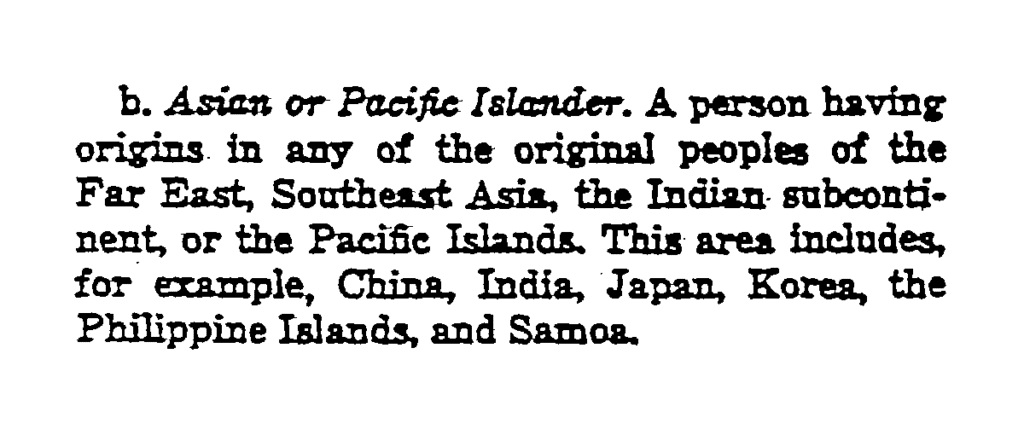

The fierce debate over how the government should view race and ethnicity gained new visibility in the early 1990s, thanks to increased congressional scrutiny and a flurry of lobbying from advocacy groups around the census. Prompted by criticism that OMB’s categories were incapable of measuring new immigrant communities and those who identify as multiracial, the agency agreed to initiate a review of Directive 15 and formed a new committee to make recommendations in 1993.
AAPI groups pushing for revisions of OMB’s guidelines had established the National Coalition for an Accurate Count of Asians and Pacific Islanders in 1987. In communications to lawmakers, they argued that the single overlapping “Asian or Pacific Islander” category fed the damaging “model minority myth”—frustrating community members who felt they had to “prove their minority status.”[xxiii]
Other activists notably opposed changes to the directive, worrying that they could be costly to implement and would disrupt the historical continuity of data. Black groups including the NAACP and the National Urban League formed their own coalition, jointly writing in 1994 that “we are opposed to any action by OMB which will result in the disaggregation of the Black population.”[xxiv] Appearing before a House subcommittee in 1993, senior OMB official Sally Katzen further testified that the agency heard from “members of some minority communities” who viewed potential revisions as “a blatant attempt to provoke internal dissension within a larger minority group or who were concerned that this would reduce their official count within the general population to their detriment.”[xxv]
But another group—Native Hawaiians—saw opportunity and seized the moment. It was during this time that debate over their status took center stage.
THE NATIVE HAWAIIAN QUESTION
While “Asian” as a category first appeared on the 1870 Census, it would take nearly a century for Pacific Islanders to be recognized with the introduction of “Hawaiian” and “Part Hawaiian” categories in 1960, though “Part Hawaiian” was later removed in 1970.[xxvi] But OMB’s decision to bundle them into the larger Asian category in 1977 was a source of contention and protest, with Native Hawaiians groups decrying the decision as an erasure of their community.
Daniel Akaka (D-Hawaii), America’s first senator of Native Hawaiian ancestry, became a vocal proponent of reclassifying Native Hawaiians to the “American Indian and Alaska Native” category.[xxvii] Fresh off of spearheading a successful push for Congress to acknowledge and apologize for the “U.S. complicity in the overthrow of the Hawaiian monarchy at the end of the 19th century,” he pressured the Clinton administration to act ahead of the 2000 Census, testifying in 1993: “I want to make it clear that Native Hawaiians are Native Americans. While we are culturally Polynesian, we are descendants of the aboriginal people who occupied and exercised sovereignty in the area that now constitutes the State of Hawaii.”[xxviii]
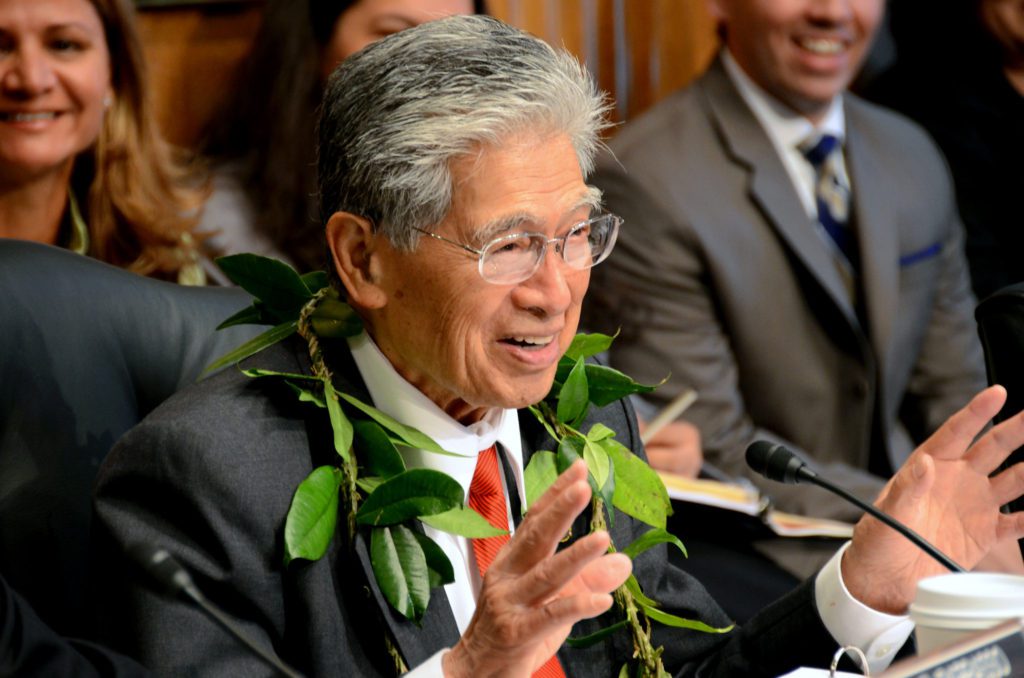

Backed by Native Hawaiian and Samoan groups who were pushing for similar reclassification to the “Native” category, witnesses for Asian American organizations largely supported Senator Akaka’s proposal. Henry Der, then-executive director of Chinese for Affirmative Action, highlighted the inconsistency of federal statutes in his remarks before Congress, stating that “in some cases, [Native Hawaiians are] identified as Asian Pacific Islanders and in other instances they’re identified as Native Americans.”[xxix]
According to Espiritu and Omi, OMB’s Katzen surprised advocates by suggesting that Native Hawaiians and Pacific Islanders be placed together in a standalone category. The move would allow for their data to “no longer be overwhelmed by the aggregate data of the much larger Asian groups.”[xxx]
The hard-won compromise was finalized by OMB’s interagency group, which rejected requests to reclassify Native Hawaiians but split the blanket term “Asian or Pacific Islander” into two.[xxxi] With a 1997 revision of Directive 15, the federal government began collecting and reporting data on “Asian American” and “Native Hawaiian or other Pacific Islander” populations separately, recognizing them as distinct categories.[xxxii]
“The public participation is particularly important because it reminds us constantly that there are people behind the numbers and for many, this is a deeply personal issue,” Katzen later concluded.[xxxiii]
DISAGGREGATION GAINS STEAM
Despite the OMB’s move to divorce Asian Americans and Pacific Islanders ahead of the 2000 Census, the label “AAPI” stuck, much to the consternation of some Pasifika leaders—but to the relief of others.[xxxiv] But with the continued growth in diversity and political clout of AAPIs, advocacy groups have managed to convince recent administrations to acknowledge the need for better data about a ballooning number of subgroups.[xxxv]
Disaggregation has purportedly been a bipartisan priority under at least five presidencies (Clinton, Bush, Obama, Trump, and Biden), though little has been written about their efforts over the last decade.[xxxvi] President Bill Clinton was the first to establish a White House Initiative on Asian Americans and Pacific Islanders (WHIAAPI) via executive order in 1999, charging the office with improving the collection of AAPI data. In a January 16, 2001 interim report to Clinton, AAPI leaders listed “improve data collection, analysis, and dissemination” as their top recommendation, expressing concerns that federal agencies were slow to implement OMB’s 1997 standards.[xxxvii]
But former federal officials who spoke to The Yappie said data disaggregation efforts only ramped up after the watershed 2008 election, which saw the ascendance of the nation’s first Black president and fresh conversations around racial equity. Pledging to improve the federal government’s data collection practices, President Barack Obama moved WHIAAPI from its original placement at HHS to the U.S. Department of Education, where he launched an AAPI data quality campaign called iCount.[xxxviii] The department also made headlines for doling out nearly $1 million in federal grants to Minnesota, Hawaii, and Washington to gather and study data on AAPI students by their ethnicity.[xxxix]
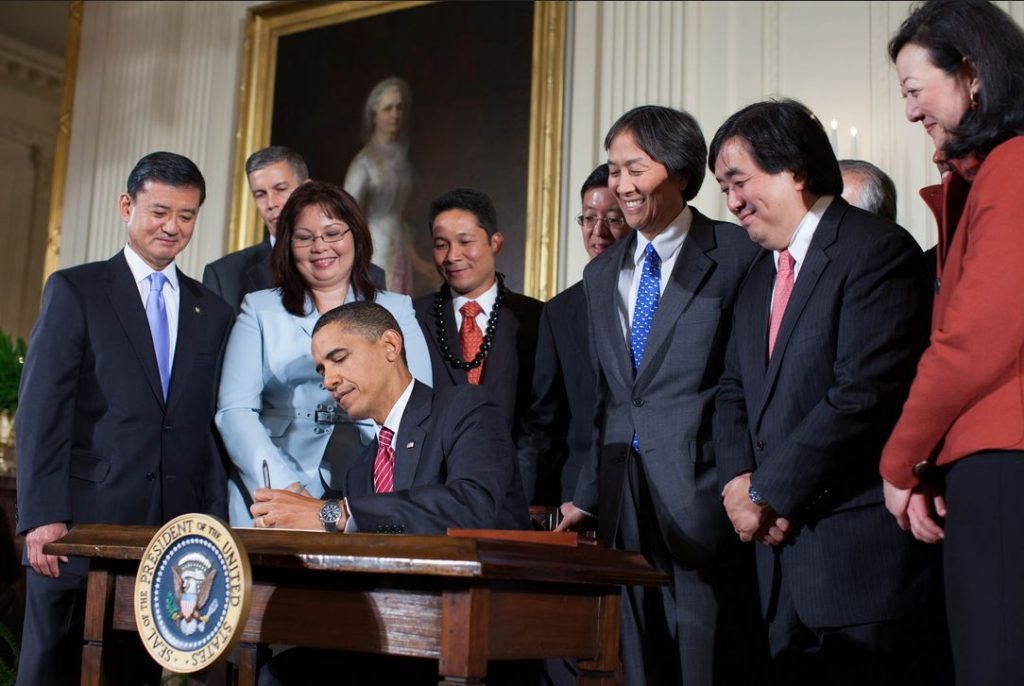

Elsewhere, WHIAAPI partnered with OMB and headed a government-wide effort to encourage disaggregation systems in federal agencies, leading to apparent advances at the U.S. Departments of Labor, Justice, and Housing and Urban Development.[xl] In 2014, the administration launched Data.gov/AAPI, a “comprehensive hub” of government data on AAPIs containing nearly 2,000 datasets.[xli]
“By not collecting data on AAPIs as we are, in all our diversity, we are made invisible to the system. The erasure of major differences leads to ‘one size fits all’ policies and programs that fit no AAPI group,” said Tung Nguyen, chair of the AAPI Victory Alliance who previously led Obama’s Advisory Commission on AAPIs.[xlii] “I call this the ‘gaslighting’ of Asian Americans… Those working on AAPI issues during the Obama administration understood that this structural issue is not simply about data—it is about our right to be seen and to matter.”[xliii]
In the following administration, President Donald Trump’s AAPI commission called for executive action to ensure “better data on the AAPI experience” during the pandemic and proposed conducting telephone interviews with 1,000 AAPI business owners “to determine the economic and social impact of COVID-19” on the broader community in December 2020.[xliv]
But the survey never happened, noted Tina Wei Smith, who was appointed to serve as executive director of WHIAAPI as it was relocated to the U.S. Department of Commerce in late 2019.[xlv] By the time money was spent to contract an AAPI women-owned firm, with data scheduled to be captured during February and March 2021, the project had been tabled due to the transition between the Trump and Biden administrations.
“During my tenure, prioritizing the need for more data and disaggregated data for the AANHPI community was a focal point of both the Commissioners and the Initiative,” Smith told The Yappie. “We encouraged the U.S. Census [Bureau] to disaggregate their data for the Small Business Survey through pandemic shutdowns [and] funded the Minority Business Development Agency to execute a small business owner survey to assess the concerns and challenges of the Asian American, Native Hawaiian, and Pacific Islander community through the pandemic.”[xlvi]
Aside from presidential efforts, senior AAPI officials and departments have also paved the way for limited progress on the issue. In 2003, former Labor Secretary Elaine Chao’s Bureau of Labor Statistics added a question to the Current Population Survey for respondents to indicate whether they are Asian Indian, Chinese, Filipino, Japanese, Korean, or Vietnamese.[xlvii] HHS announced plans more than a decade later to “launch the first-ever, large-scale national health survey to collect detailed health information on [NHPI] households.”[xlviii]
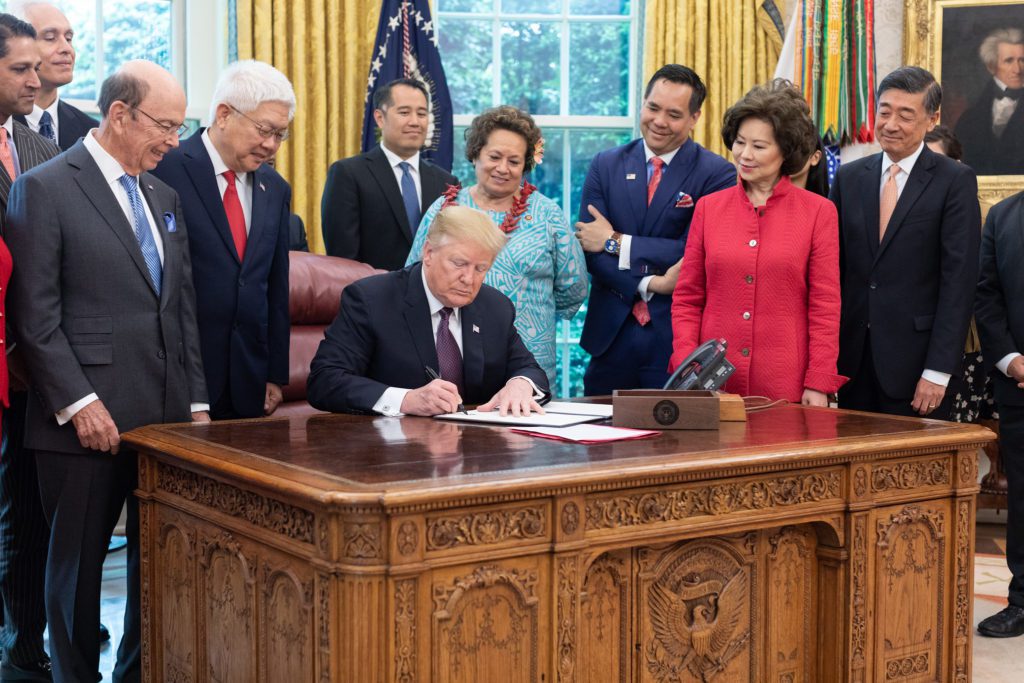

Early moves by the Biden administration suggest that data disaggregation will return with more prominence in 2022. Amid the surge in violence against AAPIs during the pandemic, President Joe Biden established an “Equitable Data Working Group” in January 2021 and directed the Attorney General to “expand collection of data and public reporting regarding hate incidents.”[xlix]
In a May 2021 order, Biden also authorized the establishment of the White House Initiative on Asian Americans, Native Hawaiians, and Pacific Islanders (WHIAANHPI) at HHS, handing it a broad mandate to “expand the collection and use of disaggregated data at the Federal, State and local level on AA and NHPI communities.”[l] The document also formalized recognition of Native Hawaiians and the acronym “AANHPI” throughout federal agencies, which is significant considering more than 30 percent of federal data sources fail to provide disaggregated NHPI data.
With the continued growth in diversity and political clout of AAPIs, advocacy groups have managed to convince recent administrations to acknowledge the need for better data about a ballooning number of subgroups.
Krystal Ka‘ai, the first Native Hawaiian ever tapped to head WHIAANHPI, told The Yappie that the Initiative would be “laser focused” on the issue in the year ahead.[li]
“As the fastest growing racial group in the country, Asian Americans, Native Hawaiians, and Pacific Islanders cover a wide and incredibly diverse range of communities,” Ka‘ai said. “The ability to disaggregate data on our population helps to not only highlight the unique issues impacting individual communities, but also to develop policies and programs that better serve the particular needs of different subgroups.”
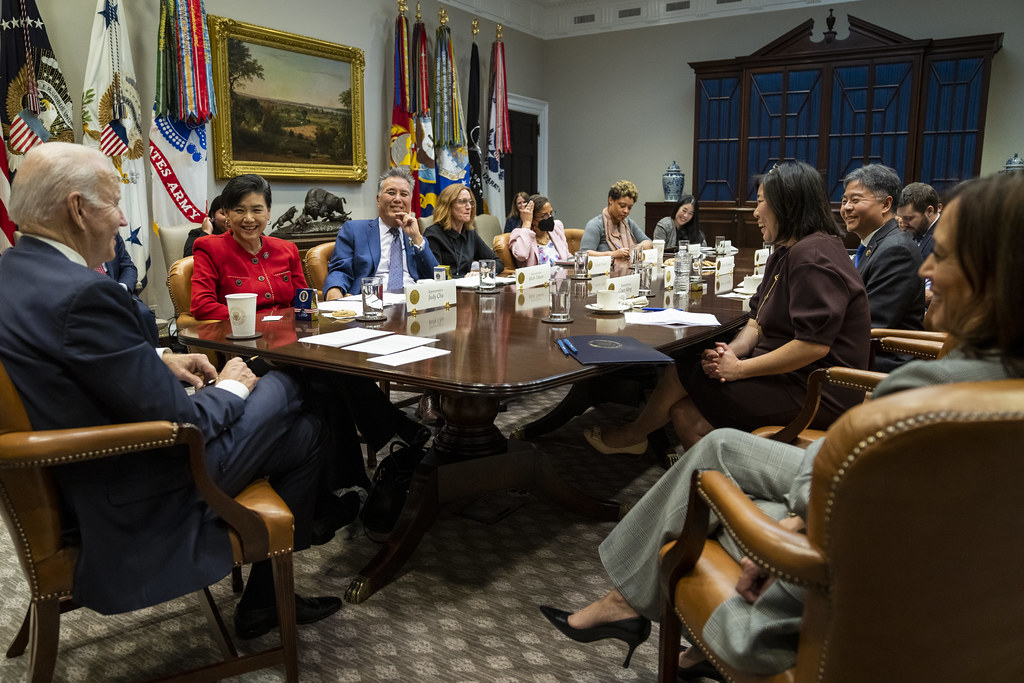

STATES FILL FEDERAL GAPS
Despite advances at the federal level, government officials concede that their efforts have been moving at a glacial pace.[lii] In the past decade, a handful of states have already enacted laws mandating disaggregation at far more comprehensive levels than outlined in OMB Directive 15, though overall collection remains lacking.
New York became the latest to require state agencies to collect and publish detailed data on AAPI groups after Gov. Kathy Hochul signed a bill sponsored by Assemblymember Yuh-Line Niou (D) in December 2021.
“Our state can’t begin to address problems it can’t see, and for too long AAPI New Yorkers have been treated monolithically when what was needed was nuance and deeper understanding,” Niou told The Yappie.[liii] “Twenty percent of Asian Indians and Filipinos struggle with limited English proficiency. Among Vietnamese and Chinese Americans, that number is closer to half. And one in four Asian Americans lives in poverty, yet the community receives the least amount of government assistance of any group.”
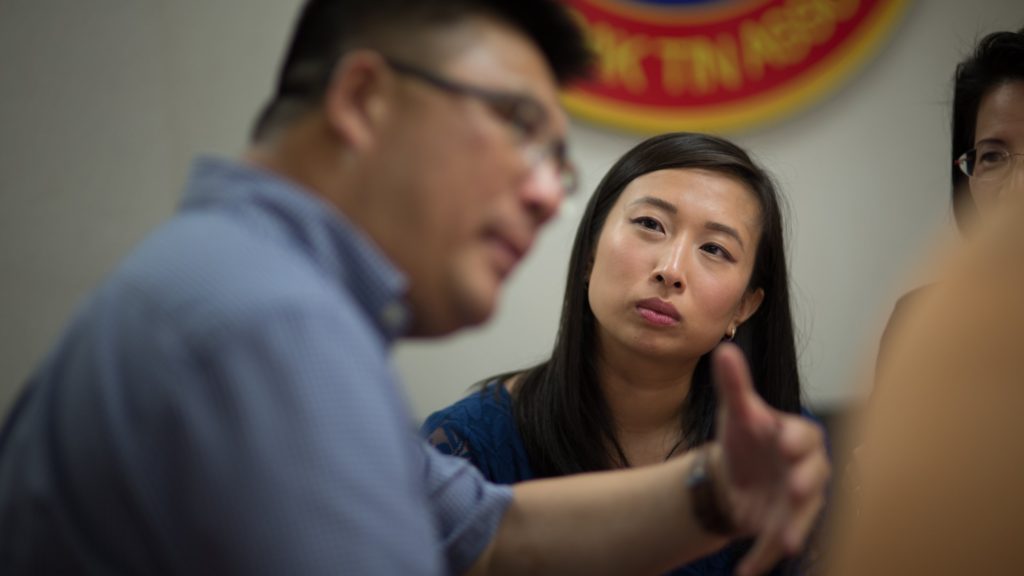

Some local agencies and nonprofit organizations have also leaned on data disaggregation for key projects during the pandemic, including the California-based organization, Stop AAPI Hate. The group, which was founded in March 2020 to track the rise in anti-Asian hate incidents, asks respondents to voluntarily self-identify their ethnicity and regularly publishes detailed reports broken down by subgroup.
“Even though COVID-19 racism usually gets directed towards those who are Chinese and look Chinese, we know that different ethnic groups experience racism differently and disproportionately,” said co-founder of Stop AAPI Hate Russell Jeung in an interview with The Yappie.[liv] “We need to be attuned to that.”
But Jeung emphasized that disaggregation should be viewed as a mechanism to create more precise policy solutions instead of as an all-encompassing fix.
“Data disaggregation is relevant,” he said, adding that it should be “secondary to the real concrete issues that Asian Americans face like racism, like homelessness, like unemployment.”
“The whole focus on data disaggregation, to me, is such a model minority, nerdy kind of issue. That’s coming from an academic,” Jeung continued. “If we say, ‘disaggregate our data,’ nobody is going to come to that rallying cry.”
A handful of states have already enacted laws mandating disaggregation at far more comprehensive levels than outlined in OMB Directive 15, though overall collection remains lacking.
THE FIGHT BACK
While Jeung may be right in that data disaggregation may seem like an overly-wonky topic confined to academic and activist bubbles, critics have not stayed silent. The issue has become a flashpoint in recent years, resulting in raucous demonstrations and even “incendiary” rhetoric invoking Nazism and the Holocaust.[lv]
In California, Rhode Island, Massachusetts, Connecticut, Minnesota, and elsewhere, initial attempts to pass data collection measures prompted harsh backlash from Chinese American parents, who linked disaggregation to broader battles against race-based affirmative action policies in higher education. Opponents further characterized disaggregation as a backdoor attempt to legalize racial profiling and a slippery slope to another Chinese Exclusion Act.
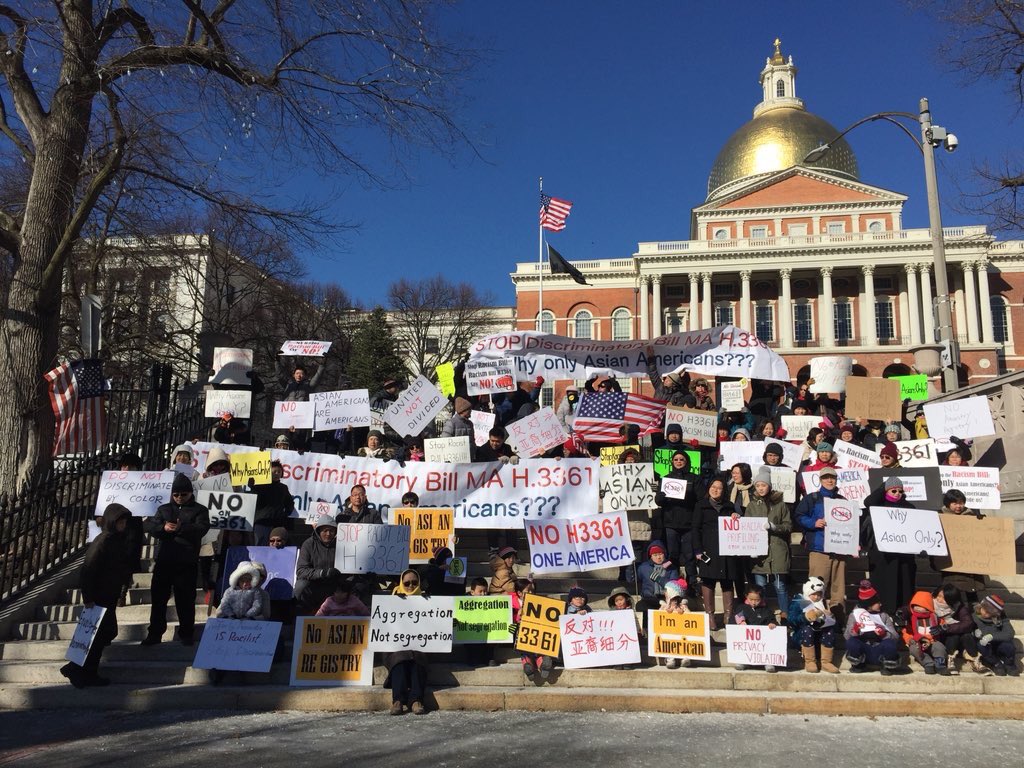

In New York, conservative critics also relied on suspicions that disaggregation could be a ploy to weaken AAPI communities’ electoral power, falsely claiming that government agencies and liberal advocacy groups were purposefully singling out AAPIs for discrimination when, in fact, Black, Latino, Indigenous, and even White populations have called for greater disaggregation of their categories.[lvi]
Other concerns around current data disaggregation practices usually focus on methodology, costs, and privacy. A July 2021 report by the Urban Institute and The Asian American Foundation noted that “AAPI organizations often rely on their own small-scale data collection, which is irregular and limited by a lack of training, capacity, and funding,” while state governors have occasionally sought more specificity on implementation when weighing disaggregation legislation.[lvii]
Furthermore, self-reporting is “the gold standard” when it comes to collecting ethnicity and race-specific data, especially in public health. However, it is not required, resulting in limitations. Smaller sample sizes drawn from an extremely heterogeneous AAPI community pose an additional challenge for researchers studying health disparities for individual subgroups—which cannot and should not be applied to all.
But for many, the pros still far outweigh potential cons.
“The payout for adding just a few more crosstabs to demographic data is astronomical,” Jenn Fang, founder of the Asian American feminist blog Reappropriate, wrote in 2016.[lviii] “The cost to state and federal institutions are minimal, and the census has already provided a clear road map for the kind of ethnic information that states can and should collect.”
NHPI LEADERS USE THEIR VOICES
Nowhere are the benefits of data disaggregation clearer than in Hawaii, which “stands out nationally for how much detail is available about specific race groups under the Asian American and Pacific Islander umbrella,” according to the Honolulu Civil Beat.[lix] The state is home to the highest percentage of Asian Americans, Native Hawaiians, and Pacific Islanders in the country, making it “better positioned” to dig into possible disparities and assess the needs of historically disadvantaged subgroups.[lx]
Though state-published statistics are more comprehensive compared to federal ones, that hasn’t stopped NHPIs from driving efforts to collect quality data of their own.[lxi] Organizations like the Hawai‘i Budget & Policy Center regularly practice data sovereignty, an approach that, when paired with disaggregation, ensures that Indigenous communities help to shape what data is collected and how it is used.
Data sovereignty has also taken hold elsewhere. “I consistently say in my work: Pacific Islanders know how to serve Pacific Islanders best,” said Alyshia Macaysa, a founding member of the Oregon Pacific Islander Coalition, in an October 2021 webinar.[lxii] “A lack of disaggregated data ultimately undermines our expertise, our abilities, our cultures, our strengths, and of course our self-determination.”
Sina Uipi, Policy Associate at the Los Angeles-based group Empowering Pacific Islander Communities (EPIC), echoed Macaysa’s sentiments.[lxiii]
“We know what it means to show up for ourselves and each other through cultural protocols that weave us together, much like the traditional mats we use to gather on to learn from our elders, and teach our children,” she told The Yappie. “As a result of the fierce advocacy and leadership path our elders have paved, we have felt the fruits of their labor when our data is disaggregated, and we will continue to prioritize it through our advocacy and policy work.”
Guam is another area where NHPI data broken down by subgroup is critical to daily life, especially during the pandemic, noted public health expert Dr. Francine Naputi. “Without disaggregated data, healthcare decisions would be driven by guesswork, which only makes the allocation of resources and personnel even more challenging,” she said. “By having locally disaggregated data available across many demographic indicators, Guam’s healthcare professionals are better able to plan for and to respond to health crises.”[lxiv]
CONCLUSION
Ultimately, data disaggregation is an issue that benefits not only the NHPI community, but all groups under the AAPI umbrella. While decades-long campaigns to advance disaggregation have been slowed by community infighting, government bureaucracy, and bitter debates over identity, the pandemic perhaps marks a turning point for a movement that has long struggled to pick up steam.
The reasons to encourage broader data disaggregation are numerous. Experts say we have reached a point where maintaining the status quo of aggregated data validates the myth that AAPIs exist and move as one. Failing to install a coherent standard clouds our ability to track long-term trends which could unmask health disparities, close educational gaps, and illuminate centers of economic inequity most directly affecting NHPIs.
It should be noted that governments should take on the tasks of funding and implementing disaggregation. The decennial census and legislative mandates in New York and elsewhere show us the path forward. Community groups can and should hold policymakers accountable and ensure data is used appropriately.
Data disaggregation may not be a catchy slogan. But in practice—as a community-centered policy that demands from history an accurate and accessible record—it surely saves lives. It is many people's belief that a combination of grassroots efforts, greater funding, and federal support can provide the research and information we need to promote equity for all.
This analysis was produced in collaboration with the Harvard Asian American Policy Review and appears in the journal's 32nd print volume.
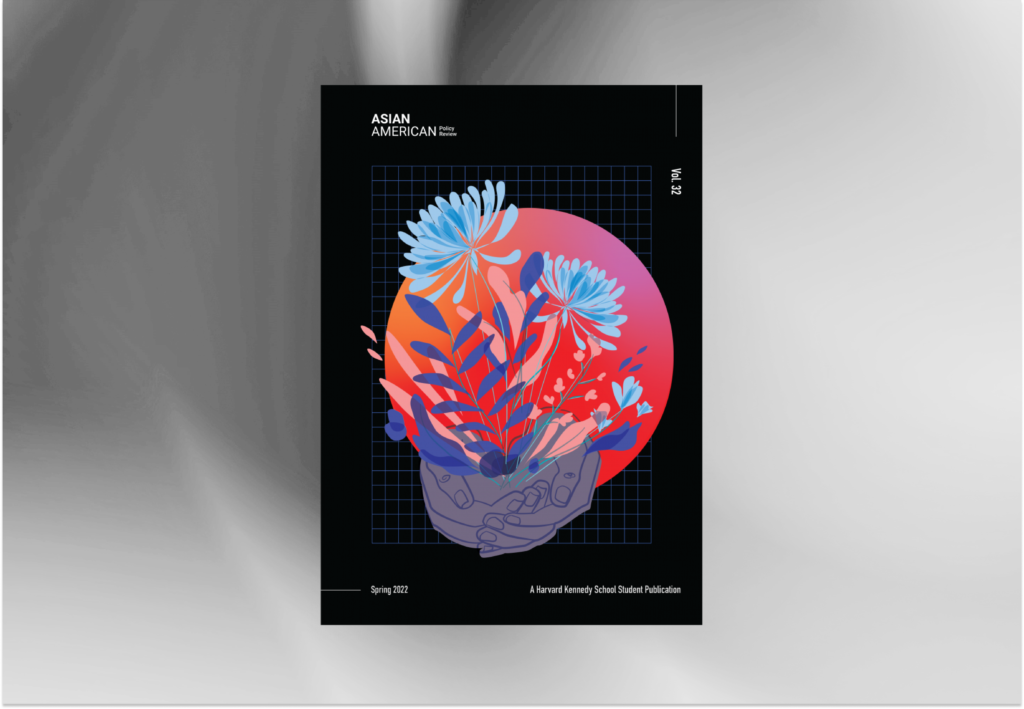

Founded in 1989, the Asian American Policy Review is the first nonpartisan academic journal in the country dedicated to analyzing public policy issues facing the Asian American and Pacific Islander (AAPI) community. The Asian American Policy Review is published by graduate students at the John F. Kennedy School of Government at Harvard University with the support of an Advisory Board of faculty and community members.
[i] Rachel Ramirez, “How Pacific Islanders Have Been Left to Fend for Themselves in the Pandemic,” Vox, December 14, 2020, https://www.vox.com/2020/12/14/22168249/pacific-islanders-native-hawaiians-covid-19-pandemic.
[ii] Rafael Bernal, “Democrats Blast CDC Report on Minorities and COVID-19,” The Hill, May 27, 2020, https://thehill.com/homenews/house/499831-democrats-blast-cdc-report-on-minorities-and-covid-19.
[iii] Shawna Chen, “Study: Gaps in Data on Native Hawaiians, Pacific Islanders Alarming Amid COVID,” Axios, September 16, 2021, https://www.axios.com/covid-data-native-hawaiians-pacific-islanders-7814153f-8f00-4f44-8f1d-862fbd35a8e2.html.
[iv] Jeremy Chan, “Chinese American Responses to the Japanese American Internment and Incarceration,” Hastings Race and Poverty Law Journal 16, no. 2 (2019), 212, https://repository.uchastings.edu/cgi/viewcontent.cgi?article=1136&context=hastings_race_poverty_law_journal.
[v] Yanan Wang, “The Long History and Slow Death of a Word Once Used to Describe Everyone and Everything from Egypt to China as Well as Rugs,” Washington Post, May 13, 2016, https://www.washingtonpost.com/news/morning-mix/wp/2016/05/13/the-long-history-and-slow-death-of-a-word-used-to-describe-everyone-from-turks-to-the-chinese/; Congresswoman Grace Meng, “Meng Bill to Remove the Term ‘Oriental’ from U.S. Law Signed by President Obama,” press release, May 20, 2016, https://meng.house.gov/media-center/press-releases/meng-bill-to-remove-the-term-oriental-from-us-law-signed-by-president.
[vi] Sara Hossaini, “50 Years Later, Former UC Berkeley Students Celebrate the Asian-American Movement They Began,” KQED, November 12, 2018, https://www.kqed.org/news/11705621/50-years-later-former-uc-berkeley-students-celebrate-the-asian-american-movement-they-began.
[vii] Gordon Lee, “The Forgotten Revolution,” Hyphen, June 1, 2003, https://hyphenmagazine.com/magazine/issue-1-premiere-summer-2003/forgotten-revolution.
[viii] “After Vincent Chin,” Deconstructing the Model Minority at the University of Michigan, accessed January 21, 2022, https://aapi.umhistorylabs.lsa.umich.edu/s/aapi_michigan/page/after.
[ix] See generally—Department of Agriculture, Participation in USDA Programs by Ethnic Groups (Washington, D.C.: U.S. Department of Agriculture, 1971), https://files.eric.ed.gov/fulltext/ED052881.pdf; George L. Wilber et al., “Orientals in the American Labor Market,” Minorities in the Labor Market 2 (1975), https://eric.ed.gov/?q=oriental&ft=on&pg=2&id=ED115723.
[x] “HEW ‘Cap the Knife’ Goes to Work,” New York Times, July 8, 1973, https://www.nytimes.com/1973/07/08/archives/cap-the-knife-goes-to-work-hew-health-education-welfare.html.
[xi] Rainier Spencer, Spurious Issues: Race And Multiracial Identity Politics In The United States (United Kingdom: Taylor & Francis, 2019), introduction; Cynthia N. Graae et al., To Know or Not to Know: Collection and Use of Racial and Ethnic Data in Federal Assistance Programs (Washington, D.C.: U.S. Commission on Civil Rights, 1973), 1, https://files.eric.ed.gov/fulltext/ED091110.pdf; Theodore M. Hesburgh et al., Federal Civil Rights Enforcement Effort (Washington, D.C.: U.S. Commission on Civil Rights, 1970), 123, https://static.ewg.org/reports/2021/BlackFarmerDiscriminationTimeline/cr12en2.pdf.
[xii] Juanita Tamayo Lott, Asian Americans: From Racial Category to Multiple Identities (Walnut Creek, CA: AltaMira Press, 1998), 38-40; “Juanita Tamayo Lott – Bellevue College – APAH Heritage Month,” YouTube video, 1:16:39, posted by APISA Asian Pacific Islander Student Association, May 10, 2021, https://www.youtube.com/watch?v=s64vaonygBA; Karen Grigsby Bates and Shereen Marisol Meraji, “The Student Strike that Changed Higher Ed Forever,” National Public Radio (NPR), March 21, 2019, https://www.npr.org/sections/codeswitch/2019/03/21/704930088/the-student-strike-that-changed-higher-ed-forever; Lisa Suguitan Melnick, “Juanita Tamayo Lott: Woman Warrior of the Golden State,” Positively Filipino, May 21, 2019, http://www.positivelyfilipino.com/magazine/juanita-tamayo-lott-woman-warrior-of-the-golden-state.
[xiii] Virginia Y. Trotter et al., Report of the Ad Hoc Committee on Racial and Ethnic Definitions of the Federal Interagency Committee on Education (Washington, D.C.: Federal Interagency Committee, 1975), 5, https://files.eric.ed.gov/fulltext/ED121636.pdf.
[xiv] Yen Le Espiritu and Michael Omi, “’Who Are You Calling Asian?’: Shifting Identity Claims, Racial Classification, and the Census,” in The State of Asian Pacific America: Transforming Race Relations – A Public Policy Report, ed. Paul M. Ong (Los Angeles: UCLA Asian American Studies Center, 2000), 54, http://www.aasc.ucla.edu/resources/policyreports/Transforming_Race_Relations/Transforming_Who_Are_You_Calling_Asian.pdf.
[xv] Darryl Fears, “The Roots of ‘Hispanic’,” Washington Post, October 15, 2003, https://www.washingtonpost.com/archive/politics/2003/10/15/the-roots-of-hispanic/3d914863-95bc-40f3-9950-ce0c25939046/.
[xvi] Office of Management and Budget (OMB), Race and Ethnic Standards for Federal Statistics and Administrative Reporting, OMB Directive No. 15 (Washington, D.C.: Office of Management and Budget, 1977), https://transition.fcc.gov/Bureaus/OSEC/library/legislative_histories/1195.pdf.
[xvii] Thomas P. Kim, The Racial Logic of Politics: Asian Americans and Party Competition (Philadelphia, PA: Temple University Press, 2007), 12; Irene Bloemraad, Becoming a Citizen: Incorporating Immigrants and Refugees in the United States and Canada (Berkeley, CA: University of California Press, 2006), 134.
[xviii] Felicity Barringer, “Ethnic Pride Confounds the Census,” New York Times, May 9, 1993, https://www.nytimes.com/1993/05/09/weekinreview/the-nation-ethnic-pride-confounds-the-census.html; Espiritu and Omi, “‘Who Are You Calling Asian?’,” 56.
[xix] The term “Asian Indian” is historically contested and has evolved to become “South Asian,” “Indian American,” or “South Asian American” today.
[xx] “Data Disaggregation,” Asian and Pacific Islander American Health Forum, accessed January 21, 2022, https://www.apiahf.org/focus/health-care-quality/data-disaggregation/; Thomas E. Malone et al., Report of the Secretary’s Task Force on Black and Minority Health (Washington, D.C.: U.S. Department of Health and Human Services, 1986), https://minorityhealth.hhs.gov/assets/pdf/checked/1/ANDERSON.pdf.
[xxi] Malone et al., Black and Minority Health, 81.
[xxii] Espiritu and Omi, “‘Who Are You Calling Asian?’,” 45.
[xxiii] Arthur S. Flemming et al., Success of Asian Americans: Fact or Fiction? (Washington, D.C.: U.S. Commission on Civil Rights, 1980), 28, https://files.eric.ed.gov/fulltext/ED216071.pdf.
[xxiv] Kim M. Williams, “Defying the Civil Rights Lobby: The American Multiracial Movement” (paper presented at Benjamin L. Hooks Institute for Social Change, Memphis, TN, April 2007), 12, https://www.memphis.edu/benhooks/pdfs/williams.pdf.
[xxv] Review of Federal Measurements of Race and Ethnicity: Hearings before the Subcommittee on Census, Statistics and Postal Personnel of the Committee on Post Office and Civil Service, House of Representatives, 103rd Cong. 215 (1993) (statement of Sally Katzen, Administrator, Office of Information and Regulatory Affairs, OMB), https://www.google.com/books/edition/Review_of_Federal_Measurements_of_Race_a/y92bjgaTZZQC?hl=en&gbpv=0.
[xxvi] Lindsay Hixson, Bradford B. Hepler, and Myoung Ouk Kim, The Native Hawaiian and Other Pacific Islander Population: 2010, C2010BR-12 (Washington, D.C.: U.S. Census Bureau, 2012), 2, https://www.census.gov/prod/cen2010/briefs/c2010br-12.pdf.
[xxvii] Espiritu and Omi, “‘Who Are You Calling Asian?’,” 67.
[xxviii] “Legislative Interests,” History, Art and Archives, U.S. House of Representatives, accessed January 21, 2022, https://history.house.gov/Exhibitions-and-Publications/APA/Historical-Essays/Growing-Diversity/Legislative-Interests/; Review of Federal Measurements of Race and Ethnicity: Hearings before the Subcommittee on Census Statistics and Postal Personnel of the Committee on Post Office and Civil Service, House of Representatives, 103rd Cong. 202 (1993), https://books.google.com/books?id=y92bjgaTZZQC.
[xxix] Review of Federal Measurements of Race and Ethnicity: Hearings before the Subcommittee on Census, Statistics and Postal Personnel of the Committee on Post Office and Civil Service, House of Representatives, 103rd Cong. 95 (1993) (statement of Henry Der, National Coalition for an Accurate Count of Asians and Pacific Islanders), https://www.google.com/books/edition/Review_of_Federal_Measurements_of_Race_a/y92bjgaTZZQC?hl=en&gbpv=0.
[xxx] Espiritu and Omi, “‘Who Are You Calling Asian?’,” 75.
[xxxi] A June 1996 working paper by the US Census Bureau concluded that disaggregating Native Hawaiians even further would dramatically alter the social and economic characteristics of the Pacific Islander population. See—Edward W. Fernandez, “Comparisons of Selected Social and Economic Characteristics between Asians, Hawaiians, Pacific Islanders, and American Indians (including Alaskan Natives)” (working paper, Population Analysis and Evaluation Staff, Population Division, U.S. Bureau of the Census, 1996), 4, https://www.google.com/books/edition/Working_Paper_Series/sTXdcH4R_oQC.
[xxxii] “Revisions to the Standards for the Classification of Federal Data on Race and Ethnicity,” Office of Management and Budget (OMB) (archive), October 30, 1997, https://obamawhitehouse.archives.gov/omb/fedreg_1997standards.
[xxxiii] Faye Fiore, “Multiple Race Choices to Be Allowed on 2000 Census,” Los Angeles Times, October 30, 1997, https://www.latimes.com/archives/la-xpm-1997-oct-30-mn-48323-story.html.
[xxxiv] Naomi Ishisaka, “Why It’s Time to Retire the Term ‘Asian Pacific Islander’,” Seattle Times, November 30, 2020, https://www.seattletimes.com/seattle-news/why-its-time-to-retire-the-term-asian-pacific-islander/; Li Zhou, “The Inadequacy of the Term ‘Asian American’,” Vox, May 5, 2021, https://www.vox.com/identities/22380197/asian-american-pacific-islander-aapi-heritage-anti-asian-hate-attacks.
[xxxv] Karthick Ramakrishnan and Janelle Wong, “Ethnicity Data Is Critical to Address the Diverse Needs of Asian Americans and Pacific Islanders,” AAPI Data, January 29, 2018, http://aapidata.com/blog/ethnicity-data-is-critical/.
[xxxvi] Exec. Order No. 13125, 64 F.R. 31105 (1999), https://www.govinfo.gov/content/pkg/FR-1999-06-10/pdf/99-14901.pdf; Exec. Order No. 13339, 69 F.R. 28037 (2004), https://www.govinfo.gov/content/pkg/FR-2004-05-17/pdf/04-11271.pdf; Exec. Order No. 13515, 3 C.F.R. 13515 (2009), https://www.govinfo.gov/content/pkg/CFR-2010-title3-vol1/pdf/CFR-2010-title3-vol1-eo13515.pdf; Exec. Order No. 13872, 84 F.R. 22321 (2019), https://www.govinfo.gov/content/pkg/FR-2019-05-16/pdf/2019-10398.pdf; Exec. Order No. 14031, 86 F.R. 29675 (2021), https://www.federalregister.gov/documents/2021/06/03/2021-11792/advancing-equity-justice-and-opportunity-for-asian-americans-native-hawaiians-and-pacific-islanders.
[xxxvii] Office of the White House Initiative on AAPIs, Asian Americans and Pacific Islanders: A People Looking Forward: Action for Access and Partnerships in the 21st Century: Interim Report to the President and the Nation (Washington, D.C.: President’s Advisory Commission on Asian Americans and Pacific Islanders, 2001), 33-35, https://permanent.fdlp.gov/lps17931/www.aapi.gov/intreport.htm.
[xxxviii] “President Obama Speaks at the APAICS 22nd Annual Awards Gala Dinner,” YouTube video, 15:24, posted by The Obama White House, May 4, 2016, https://www.youtube.com/watch?v=jBNWOIToxDU; Don Yu and Kiran Ahuja, “iCount: Equity through Representation,” White House Blog, White House (archive), June 12, 2013, https://obamawhitehouse.archives.gov/blog/2013/06/12/icount-equity-through-representation.
[xxxix] “Asian American and Pacific Islander Data Disaggregation Initiative,” U.S. Department of Education, last modified June 17, 2016, https://www2.ed.gov/programs/d2/index.html; Chris Fuchs, “Minnesota, Hawaii, Washington Win Federal Grants to Disaggregate Data,” NBC, November 15, 2016, https://www.nbcnews.com/news/asian-america/minnesota-hawaii-washington-win-federal-grants-disaggregate-data-n684021.
[xl] Brian A. Harris-Kojetin, “Federal Agency Approaches to Providing Statistical Information on Detailed Asian and Native Hawaiian and Other Pacific Islander Groups” (working paper, OMB, 2012), 1, https://obamawhitehouse.archives.gov/sites/default/files/docs/omb_spwp_on_detailed_race_groups_final_8-7-12.pdf; White House (archive), “Fact Sheet: The White House Summit on Asian Americans and Pacific Islanders,” press release, May 12, 2015, https://obamawhitehouse.archives.gov/the-press-office/2015/05/12/fact-sheet-white-house-summit-asian-americans-and-pacific-islanders.
[xli] “White House Launches Online Resource for Asian American Data,” NBC, October 1, 2014, https://www.nbcnews.com/news/asian-america/white-house-launches-online-resource-asian-american-data-n215856.
[xlii] Discussion with the authors on January 12, 2022.
[xliii] See note 42.
[xliv] The President’s Advisory Commission on Asian Americans and Pacific Islanders, Advancing Economic Empowerment for Asian Americans and Pacific Islanders: A Call to Action (Washington, D.C.: U.S. Department of Commerce, 2020), 9-12, https://www.commerce.gov/sites/default/files/2021-03/RLA%20-%20PAC%20AAPI%20Report%202020%20-%201.25.2021_DIGITAL.pdf; Minority Business Development Agency, “Submission to the Office of Management and Budget (OMB) for Review and Approval; Comment Request; Asian American Pacific Islander Commission Survey,” Federal Register 85, no. 248 (December 28, 2020): 84304, https://www.federalregister.gov/documents/2020/12/28/2020-28546/agency-information-collection-activities-submission-to-the-office-of-management-and-budget-omb-for.
[xlv] Discussion with the authors on January 5, 2022.
[xlvi] Message to the authors on January 26, 2022.
[xlvii] In addition to serving in Cabinet-level roles, Chao was also the Co-Chair of WHIAAPI during both the Bush and Trump administrations, where it is understood that she had a hand in efforts to expand the collection of data on AAPI communities. See–Mary D. Allard, “Asians in the U.S. Labor Force: Profile of a Diverse Population,” Monthly Labor Review (2011): 3, https://www.bls.gov/opub/mlr/2011/11/art1full.pdf.
[xlviii] Kiran Ahuja, “Improving Data Collection on Native Hawaiian and Pacific Islander Health,” White House Blog, White House (archive), December 18, 2013, https://obamawhitehouse.archives.gov/blog/2013/12/18/improving-data-collection-native-hawaiian-and-pacific-islander-health.
[xlix] White House, “Executive Order on Advancing Racial Equity and Support for Underserved Communities through the Federal Government,” press release, January 20, 2021, https://www.whitehouse.gov/briefing-room/presidential-actions/2021/01/20/executive-order-advancing-racial-equity-and-support-for-underserved-communities-through-the-federal-government/; White House, “Memorandum Condemning and Combating Racism, Xenophobia, and Intolerance against Asian Americans and Pacific Islanders in the United States,” press release, January 26, 2021, https://www.whitehouse.gov/briefing-room/presidential-actions/2021/01/26/memorandum-condemning-and-combating-racism-xenophobia-and-intolerance-against-asian-americans-and-pacific-islanders-in-the-united-states/.
[l] Exec. Order No. 14031. See note 36.
[li] Message to the authors on January 5, 2022.
[lii] A spokesperson for the U.S. Census Bureau told The Yappie that reports of a proposal to further disaggregate Native Hawaiians and Pacific Islanders in its data products “is not new.” See— Ku’uwehi Hiraishi, “US Census Bureau May Soon Provide Separate Data for Native Hawaiians, but They Need Public Input,” Hawaii Public Radio, October 28, 2021, https://www.hawaiipublicradio.org/local-news/2021-10-28/us-census-bureau-may-soon-provide-separate-data-for-native-hawaiians-but-they-need-public-input.
[liii] Message to author on January 5, 2022.
[liv] Phone interview with the authors on December 20, 2021.
[lv] Chris Fuchs, “Rhode Island Data Disaggregation Law Revives Debate among Asian Americans,” NBC, July 27, 2017, https://www.nbcnews.com/news/asian-america/rhode-island-data-disaggregation-law-revives-debate-among-asian-americans-n786986.
[lvi] Hansi Lo Wang, “2020 Census Will Ask Black People about Their Exact Origins,” NPR, March 13, 2018, https://www.npr.org/2018/03/13/593272215/for-the-first-time-2020-census-will-ask-black-americans-about-their-exact-origin.
[lvii] LesLeigh Ford et al., Advancing Equity for AAPI Communities: Results and Recommendations from a Landscape Study of Asian American and Pacific Islander Organizations (Washington, D.C.: Urban Institute, 2021), 14, https://www.urban.org/sites/default/files/publication/104527/advancing-equity-for-aapi-communities_1.pdf.
[lviii] Jenn Fang, “California Turns Down Opportunity to Receive Federal Money to Disaggregate AAPI Data,” Reappropriate (blog), June 27, 2016, http://reappropriate.co/2016/06/california-turns-down-federal-money-to-disaggregate-aapi-data/.
[lix] Anita Hofschneider, “Here’s Why Hawaii Is a Model for Identifying Pandemic Racial Disparities,” Honolulu Civil Beat, September 23, 2021, https://www.civilbeat.org/2021/09/heres-why-hawaii-is-a-model-for-identifying-pandemic-racial-disparities/.
[lx] Joyce Lee-Ibarra, “The Power and Potential of Disaggregated Data,” Hawaii Data Collaborative, accessed January 21, 2022, https://www.hawaiidata.org/news/2020/7/21/disaggregated-data-power-and-potential.
[lxi] Shawna Chen, “Survey: COVID-19 Vaccine a Source of NHPI Hesitation and Mistrust,” The Yappie, May 26, 2021, https://theyappie.com/survey-covid-19-vaccine-a-source-of-nhpi-hesitation-and-mistrust/.
[lxii] “Why Data Disaggregation Matters: The Invisible Story of Native Hawaiians and Pacific Islanders,” YouTube video, 18:14, posted by APPEAL Communications, 19 October 2021, https://www.youtube.com/watch?v=46Wd53Suo9U.
[lxiii] Message to the authors on January 13, 2022.
[lxiv] Conversation with the authors on January 14, 2022.
ACKNOWLEDGEMENTS
Editors: Zizhan Lou and Sarah Lin (HKS-AAPR), in collaboration with Shawna Chen (The Yappie)
The Yappie is your must-read briefing on AAPI power, politics, and influence. Make a donation, subscribe, and follow us on Twitter (@theyappie). Send tips and feedback to [email protected].







